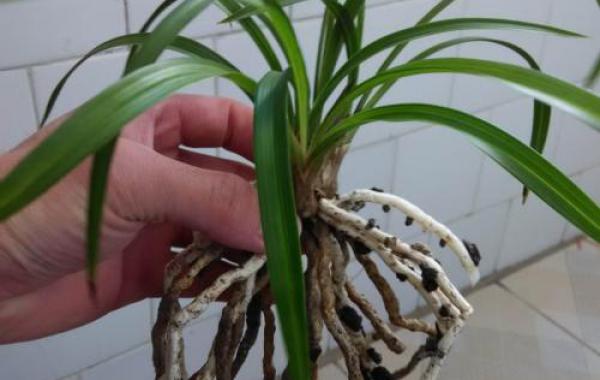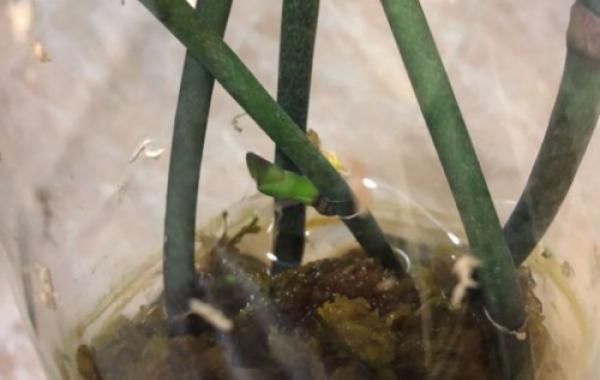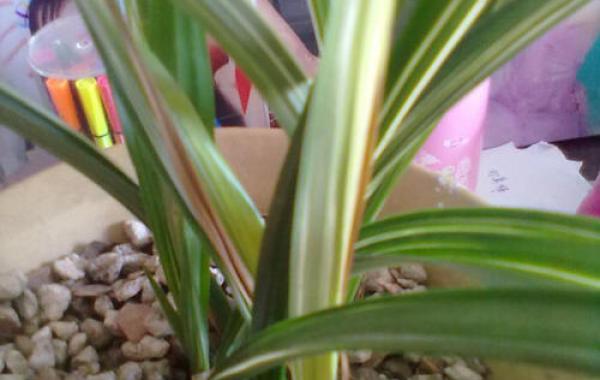Where should we pay attention to the turning of orchids?

Pay attention to where the orchid turns the pot.
Orchid pot turning has the following five points to pay attention to, I hope it can bring some help to your orchid planting.
First, pay attention to the disinfection of old orchid pots or the reuse of original orchid pots, they must be washed with clean water and dried in the sun, which can play the role of disinfection and sterilization. Newly used pots (such as plain roasting pots) should be soaked in water for a period of time before they can be used, which is both clean and eliminate "fire".
Second, pay attention to the size and height of the orchid basin, mainly according to the species of orchids, the number of orchid plants and the robust degree of orchid seedlings. If there are more plants and the growth is prosperous, you should choose a larger caliber orchid basin. Small seedlings and weak seedlings can not be planted in large pots and deep pots, and large seedlings can not be planted in small pots and shallow pots. In general, cymbidium and Jianlan pots choose slightly larger and deeper pots, while Chunlan pots choose smaller and shallower ones.
Third, pay attention to cover the drainage hole at the bottom of the basin with a window screen and press a tile on the screen to prevent the loss of basin soil without losing the function of drainage. If it is a deep basin, in addition to tiles, fill the basin with white plastic foam with a height of 1 canopy 5, or coarse-grained fairy soil to form the drainage layer of the basin bottom, and then lay a layer of culture matrix to plant orchid.
Fourth, pay attention to the planting of Fuzheng orchid plants: if only one clump is planted in a pot, the old corm should be partial to one side of the pot orchid, leaving room for development in the future. Use your hands to straighten the orchid plant and try not to let the orchid plant crowd together.
Filler plant orchid: hold the orchid in one hand and shovel the planting material in the other. When the planting material is covered up to the bulb, lift the orchid plant gently up, causing the root system to stretch more. At the same time, shake the orchid basin so that the plant is close to the root.
The depth of planting orchid should be moderate: the corm of Cymbidium should be slightly exposed, and the corm of Cymbidium should be completely covered.
Fifth, pay attention to the post-planting management after turning the basin should be placed in a semi-shaded and well-ventilated place, and then carefully irrigated in the topsoil with a spray can with small nozzle holes. Note that the fixed root water must be watered thoroughly. Normal management can be carried out after 10 to 15 days.
First, pay attention to the normal growth of the basin orchid at the time of changing the basin, not every year, but once every two years. Turning the basin can be carried out all the year round (except for extreme heat and cold). Most orchids change pots in spring and autumn. It is usually from late February to late April in spring and from late September to mid-November in autumn. But what must be done is that two days before turning the basin, watering should be controlled to make the basin a little drier, which is not only easy to take off the basin, but also can avoid the heavy water content of the orchid root.
Second, pay attention to choose sunny weather to turn the basin must choose sunny weather. The first step in turning the basin is to remove the basin. If the plant is cultivated with particles (Xianmei fairy soil, orchid cornerstone), as long as the orchid pot is upside down, clamp the base of the leaf bundle with your fingers, and gently pat the edge of the basin with the other hand to loosen the plant material, you can soon separate the orchid plant from the plant material. If you use the traditional method, planting with "orchid mud", first put the orchid pot horizontally, push the basin soil from the bottom hole of the orchid basin with your fingers, and then invert the orchid basin, clamp the base of the orchid leaves with your fingers and hold the mud pile; on the other hand, push the orchid plant with the mud pile out of the orchid basin.
Third, pay attention to root treatment and pruning with knives, it is best to prepare special scissors, soak in boiling water for a few minutes, disinfect and use.
First of all, fix the root system. Cut off the blackened roots and rotten empty roots, and be careful not to hurt the new roots when pruning, especially to protect the extremely sharp and transparent "crystal head", which is the growing point of orchids, which is very fragile and will be broken if you are not careful. The second is to prune and remove rotten and shrunken bulbs. When pruning, you should take special care of the new buds and do not touch them.
The pruned orchid plants must be strictly disinfected. Disinfection can be made with potassium permanganate 1000 times water or methyl topiramate 800 times water solution. The orchid root is soaked in the solution for 5 to 10 minutes in order to kill the bacteria.
Special attention should be paid to the fact that after soaking and disinfecting in the solution, the root contains sufficient water and can not be rushed to the basin. The root is easy to break brittle. The orchid plant should be placed in a cool and ventilated place, waiting for the orchid root to be milky white before it can be planted in a pot.
Fourth, pay attention to the disinfection of old orchid pots or the reuse of original orchid pots, they must be washed with clean water and dried in the sun, which can play a role in disinfection and sterilization. Newly used pots (such as plain roasting pots) should be soaked in water for a period of time before they can be used, which is both clean and eliminate "fire".
Fifth, pay attention to the size and height of the orchid basin, mainly according to the species of orchids, the number of orchid plants and the robust degree of orchid seedlings. If there are more plants and the growth is prosperous, you should choose a larger caliber orchid basin. Small seedlings and weak seedlings can not be planted in large pots and deep pots, and large seedlings can not be planted in small pots and shallow pots. In general, cymbidium and Jianlan pots choose slightly larger and deeper pots, while Chunlan pots choose smaller and shallower ones.
Sixth, pay attention to cover the drainage hole at the bottom of the basin with a window screen and press a tile on the screen to prevent the loss of basin soil without losing the drainage effect. if it is a deep basin, in addition to tiles, fill the basin with white plastic foam with a height of 1 canopy 5, or coarse-grained fairy soil to form a drainage layer at the bottom of the basin, and then lay a layer of culture matrix to plant orchid.
Seventh, pay attention to the planting of Fuzheng orchid plants: if only one clump is planted in a pot, the old corm should be tilted to one side of the pot orchid, leaving room for development in the future. Use your hands to straighten the orchid plant and try not to let the orchid plant crowd together.
Filler plant orchid: hold the orchid in one hand and shovel the planting material in the other. When the planting material is covered up to the bulb, lift the orchid plant gently up, causing the root system to stretch more. At the same time, shake the orchid basin so that the plant is close to the root.
The depth of planting orchid should be moderate: the corm of Cymbidium should be slightly exposed, and the corm of Cymbidium should be completely covered.
Pay attention to the post-planting management after turning the basin should be placed in a semi-shady and well-ventilated place, and then carefully irrigated in the topsoil with a spray can with small nozzle holes. Note that the fixed root water must be watered thoroughly. Normal management can be carried out after 10 to 15 days.
Related
- Is the orchid suitable for indoor use? Is it good for the body?
- How to prevent the empty root of orchids?
- What to do after the crab claw orchid is withered?
- Why are the leaves of orchids always yellow? Fertilizing and watering.
- Can the root of the gentleman orchid be saved if it is rotten?
- Diagnosis and treatment of cotton-blowing beetle insects in Cymbidium
- There is a way for a gentleman's orchid to rot.
- What is the most suitable temperature and humidity for the orchid?
- How to raise a gentleman's orchid? Cultivation techniques of Cymbidium
- How to prepare the nutritive soil for the cultivation of Cymbidium



